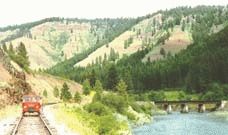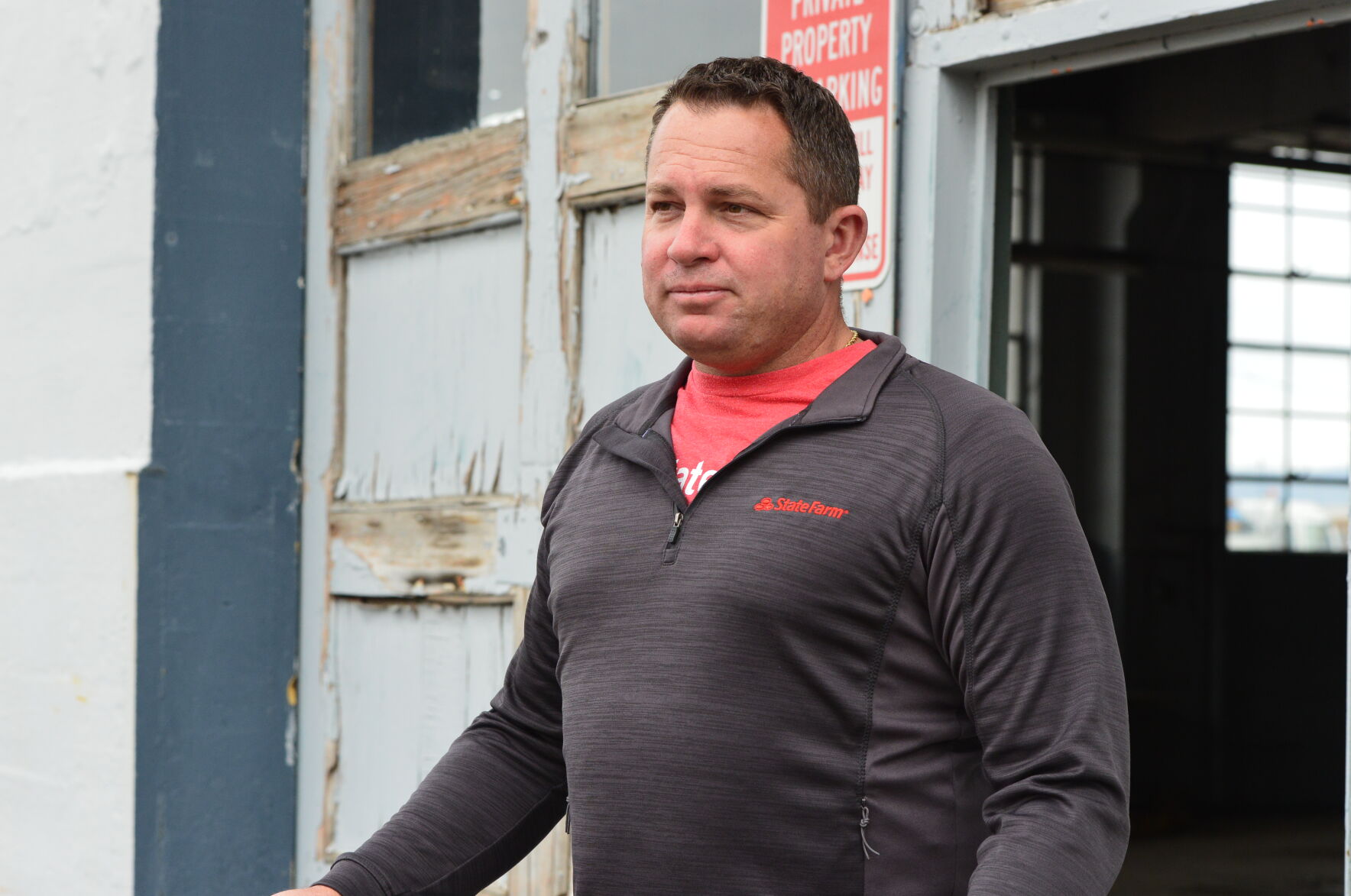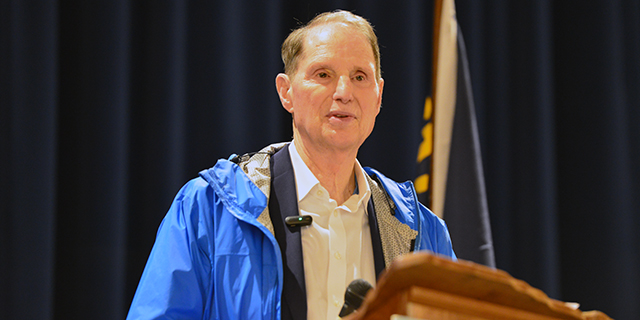VANISHING RAIL LINE
Published 12:00 am Wednesday, June 27, 2001

- ABOVE: Speeder cars pass over the railroad bridge at Rondowa - where the Wallowa and Grande Ronde rivers join. (The Observer/GARY FLETCHER).
By Gary Fletcher
Observer Staff Writer
I was thrilled when invited to ride a railroad speeder car from my hometown to Island City.
The procession of railroad motor cars was led by a popper, a one-cylinder open-air 1954 Fairmont.
When I was in grade school, the Union Pacific treated our class to a ride all the way from the Enterprise train station to the end of the line in Joseph.
One of my peers who graduated from Lostine High School was Nancy McConville. As a child, she had ridden the UP to Joseph but was privileged to get the longer ride from Jimtown. Her father, Melvin Crow, then operated M. Crow and Co. on Main Street. Doug Crow and family now run the general mercantile.
Nancy and I had something else in common. Neither of us had been down the line through the Wallowa River Canyon. Now, decades later, our dreams converged on this nostalgic trip.
It was my first and her second motor car trip.
Our conversation turned melancholy for a moment over the sense of the coming loss of another aspect of our homeland.
The plan for these rails is to tear them up and sell them for salvage.
Other speeder car veterans understood that freight pays a railroads way, not the pittance received from occasional tourist excursions such as theirs.
This was a three-week tour, covering parts of three states, that cost participants from $1,000 to $3,000 plus most meals and lodging.
Nancy let Jim travel on to Lewiston to meet up with 30 other scooter cars that would travel such lines as the Camas Prairie Railnet, the Mount Rainier Scenic Railroad and finally Simpson Timber companys logging railroad in Shelton, Wash.
Five other lines were included in the tour linking the vanishing jewels of the Pacific Northwest railroads that served the timber industry.
The excursion promised to be an education on how these vanishing railroads influenced the urban design and development of cities and towns.
Jim, Nancy and more than half the participants were from California. Three cars were from Washington. Idaho and Montana cars totalled three and there were as many from Ohio. The rest ranged from Nevada to Wisconsin and Florida.
Big Red, the largest, was a custom job planned, designed and built by Carl Vanderspek at his Vancouver, British Columbia, truck trailer business.
The motor cars had been towed from their homes. Methods of hauling them differed as much as the types of motor cars from a custom trailer pulled by a new Lincoln Navigator SUV to a motor home and an enclosed trailer.
A modest, used, compact pickup pulled one on a low, small trailer.
The speeder cars demise came about 1986 when the federal railroad administration approved the use of hy railers to transport work crews. Hy railers are the crew-cab pickups with retractable steel flanged wheels to keep them on the railroad tracks.
The hy railer pickups versatility on and off the tracks made the old scooters obsolete and the railroads junked them.
The speeders were worthless until people began collecting and refurbishing them as a hobby.
Now, what used to be a hunk of scrap metal on wheels costs $1,500. To get a fixer-upper that still runs will run about $3,000. One is for sale at $15,000.
There seems to be no end to the toys within these toys.
For me, half the fun was rebuilding the car, said Tod Hill of Stockton, Calif.
Five Thanksgiving eves ago, Hill bought his MT-14 Union Pacific A-car. He replaced all 458 rivets to tighten it up and take out the rattles. He installed air-ride seats for his fused back.
At 55 he retired. Now 63, he is on his third Pacific Northwest tour.
His A-car for the advanced technology of Ford Pinto-type engines was a supervisors car. It is enclosed, has a heater and other amenities such as sound deadening insulation and a hydraulic turntable, not afforded by the open-air workmens car.
Hills car has a short-wave radio and a cell phone. He also added an $879 global positioning system that monitors where he is.
Were streaking now, 23 miles per hour. I think Im getting a nose bleed out of this, he said, riding with his feet up and one arm in a sheepskin-lined leather sling. The cars can travel 35 to 40 mph but under 25 seemed comfortable.
The clackety-clack, the vibration and somewhat bumpy ride was pleasant and the bit of swaying was relaxing. Visibility was poor at some crossings, where the road crossed at a sharp angle and weeds were high.
Trackside rocks and debris were evidence that the line had not been maintained, but Hall said the ride was smoother than others hed been on.
Part of that he attributed to the heavier rails on this line.
The beauty of this mode of travel was immediately apparent. Riders were more a part of the environment, maybe a bit like motorcyclists. The hand controls were simple, a throttle, a brake, a clutch and two gears forward and reverse. You just settled in and enjoyed the ride.
It seemed we had the canyon to ourselves from Minam to Rondowa. At Palmer Junction we saw a fisherman.
I marveled at the quiet and undisturbed beauty. Hill said it was not uncommon on their trips. Railways maintained a fairly level grade, and often followed rivers in canyons.
I felt even more privileged not only finally to be able to live out a childhood dream to ride a speeder through the canyon but to be in the group that may have taken the last ride to the end of the line.





